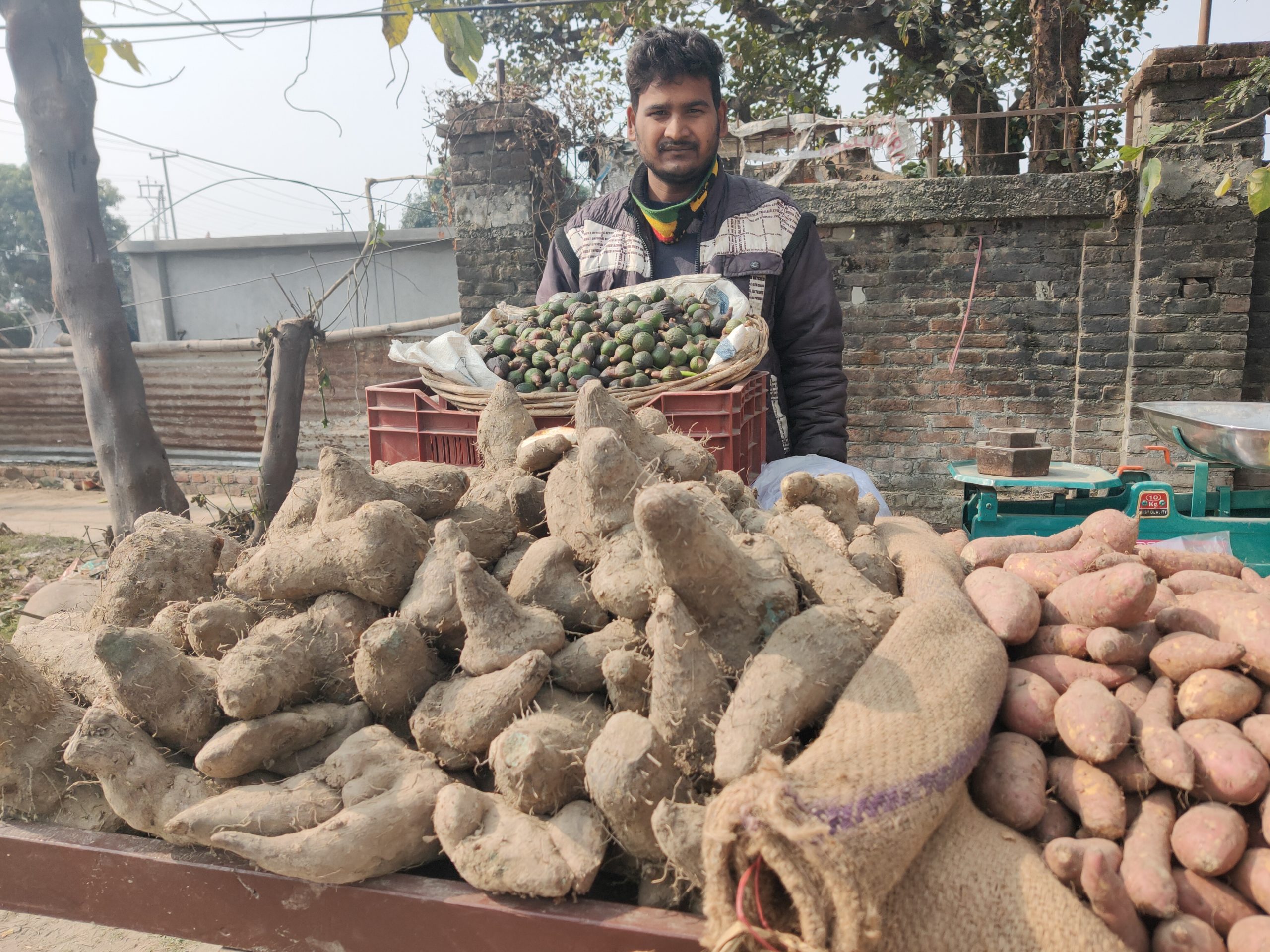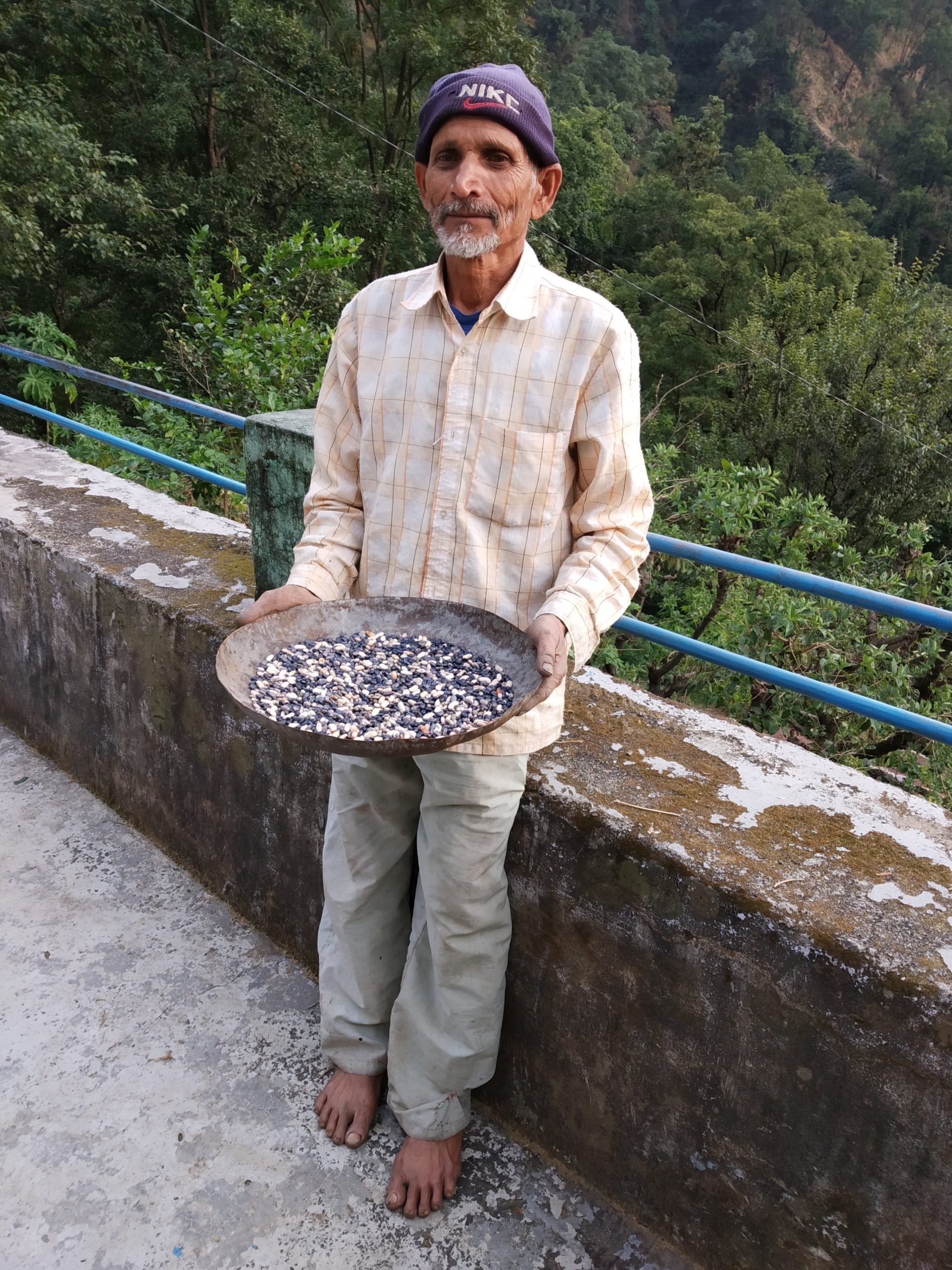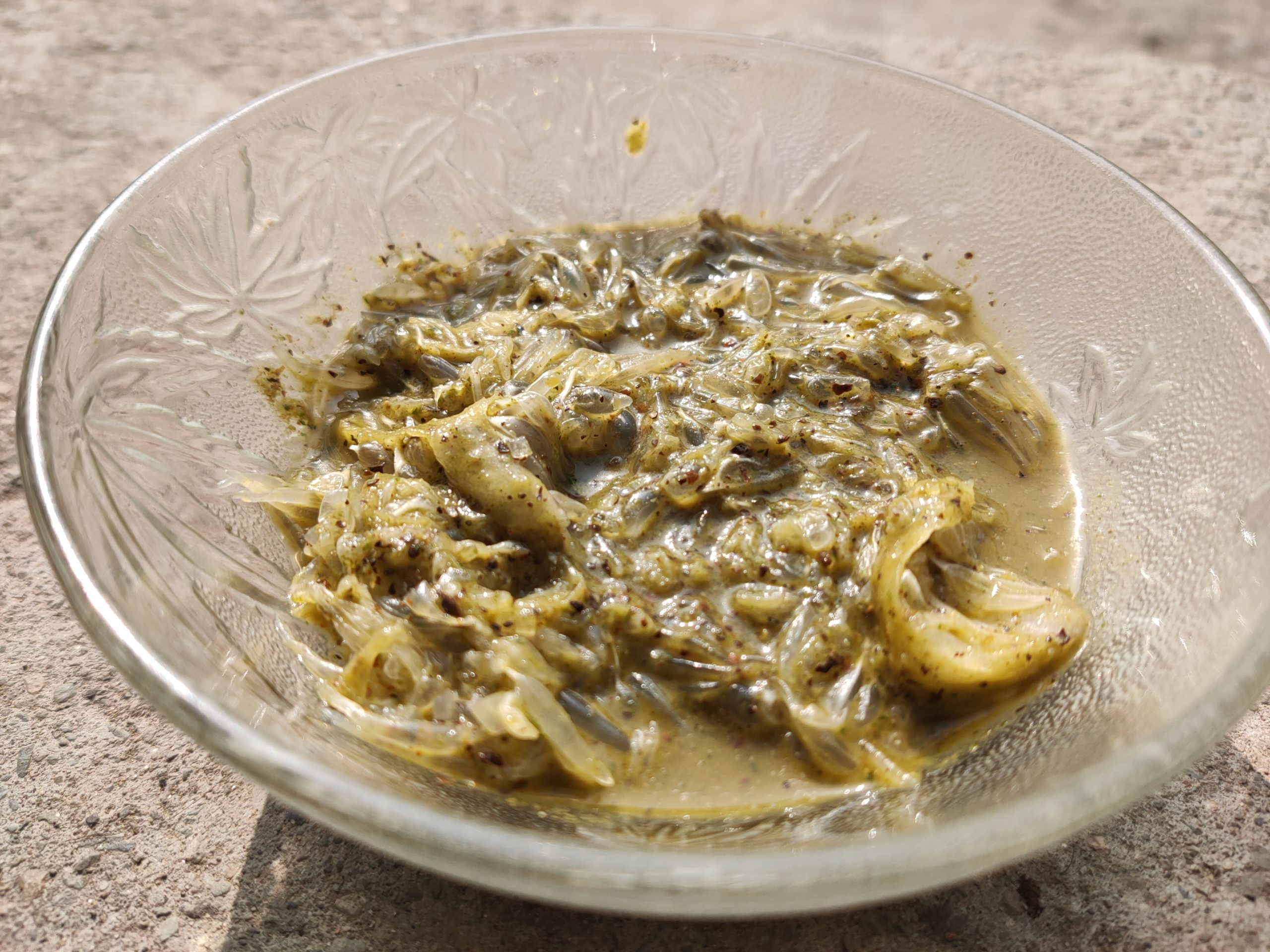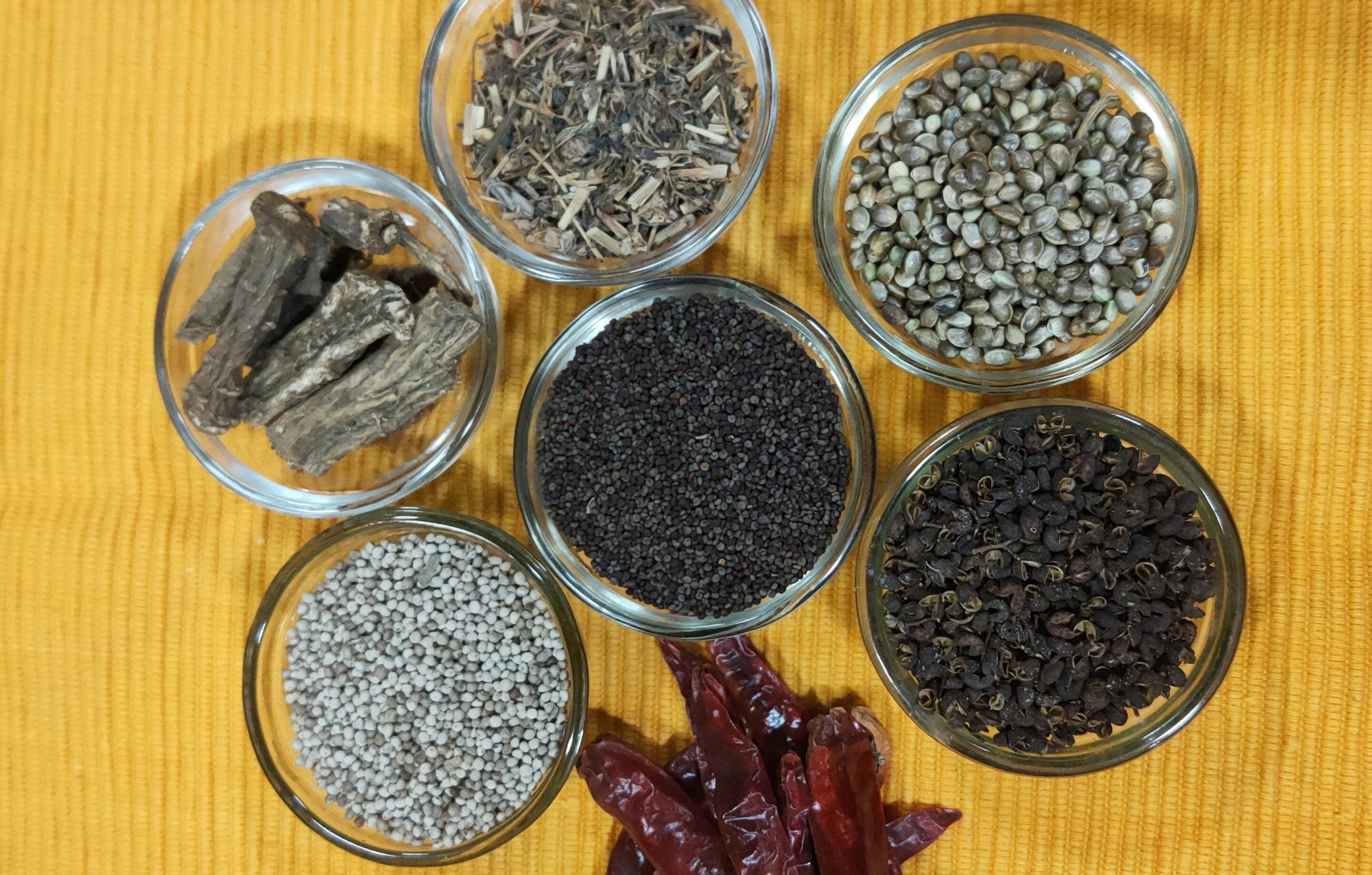Full of Beans: Wholesome winter food in Uttarakhand
In the Garhwal and Kumaon regions of Uttarakhand, winter brings with it a deliciously unique cuisine. Herbs from the upper reaches of the Himalayan state, and a rich haul of locally grown beans, tubers, citrus fruits and sun dried vegetables, provide sustenance, nutrition and warmth in the cold months to the mountain people.


Kachaloo tempered with jakhiya and powdered spices. Photo: Megha Prakash
Dehradun, Uttarakhand
The Garhwali thali that Desi Chulha serves up is popular, going by the line of people waiting to enter the restaurant that is located on the way from Dehradun, the capital of Uttarakhand, to Mussoorie.
A handwritten board outside the restaurant lists the specials of the day, that include kafuli and gahat or horse gram soup. Kafuli is a thick gravy preparation made from green leafy vegetables like spinach, fenugreek leaves, and nettle grass.
Kumaon and Garhwal, the two administrative divisions of the Himalayan state of Uttarakhand, have their own distinct culture and food, but both rely on the rich haul of tubers, lentils, pulses, beans, green leafy vegetables, citrus fruits, and spices, available to them, that make their food simple, rustic, yet hearty.

In fact, most of the ingredients used in Uttarakhand, like the beans, are a rich source of high protein and dietary fibre. And many of the winter dishes include one or the other of nearly 220 varieties of beans cultivated in Uttarakhand. Almost every mountain village and valley has its favourite variety and recipe using the beans.
Bhat or soybean for example is loaded with iron. Green leafy vegetables such as spinach and amaranth are again rich in essential vitamin and minerals. The often used nettle grass is known for its anti-inflammatory properties.
Herbed and flavoured salts are another must during meals in the cold months. Besides adding flavour to the food, the salts are taken to induce thirst so that people remember to drink water. Otherwise, because it is so cold, people would forget to drink enough water.
Bean there
Even the more widely known rajma (red kidney beans) comes in many varieties, with each one bringing a different flavour to the recipe. Rajma from Chakrata, Harsil, Uttarkashi and Munsiyari in the state, has a distinct taste. The soybean, locally called bhat, both black and white varieties, is also immensely popular. In Kumaon for instance, the black soybean is made into a flavoursome dish called churkaani, while the bhatwani is eaten in Garhwal.
“People sit together around the angeethi or wood fire stove and roast the black soybean on a griddle or a tawa,” Sarita Devi, from Chuna Mehedda village in Pauri Garhwal told Gaon Connection. “Just like families in the plains munch on peanuts, we pahadis eat roasted bhat,” she added.
Chemi are colourful and small-sized local beans but are soft and tasty. They grow throughout the hill state. Some local varieties range from white to a startling cobalt blue or orange in colour. “The seeds of these varieties are not commercially available but are passed down from generations,” Govind Prasad Kukreti, former gram pradhan of Chuna Mehedda, Pauri Garhwal, told Gaon Connection.

The beans are harvested in early September, their seeds collected and sundried before consuming. The white ones are called rayans which are used to make khichdi, added Kukreti.
Chemi that is a rich source of protein and vitamin A, is also used by the local people in performing ‘navgrah’ pooja and can be eaten during fasts, added Kusum Bhatt, a resident of village Jakhogi near Dhanoulti in Tehri Garhwal.
Gahat or horse gram is also a firm favourite and used to make stuffed paratha, soups, phaanu or phana (a creamy lentil preparation).
Winter foods of nomadic people
The upper reaches of Uttarakhand get snowbound in winters and the nomadic shepherds who make their homes in the pastoral lands, they call bugyal, start winding their way down to the lower regions. Their cuisine is very distinct. For example, the Bhotiya tribe, that resides in the Niti and Mana valleys uses faran or jambu to flavour lentils and soups. Faran is an alpine herb, which belongs to the onion family. It only grows between 2,500 metres (m) to 3,000 m altitude in the central Himalayas.
During the harsh winter months, people in the hills cook with a lot of sun dried vegetables (prepared in the summer months) and even meat. For example, meetha karela, a sweeter cousin of the bitter gourd, which grows in abundance during the monsoons, is sundried, and before cooking it is soaked in boiling water and then used.
In many parts of the state, mungri or corn is harvested, sun dried and later milled into flour for making chapatis or pancakes.

Citrus comfort
A well-beloved winter delicacy of the Kumaon region is the sana hua nimbu. It is a citrusy mix made from an indigenous variety of lemon. In Garhwal it is known as khatai.
The Kumaoni lemon or Citrus pseudolimon is a large-sized lemon much like its better known relative, galgal. The famous poetess and writer, Gaura Pant (Shivani) who belonged to Kumaon, in one of her narratives describes young girls sitting out in the bright sun, relishing the sana. Kumaoni lemons are abundant in the winters when the sana is prepared.

“Making and eating sana was a community affair,” recalled Sanjay Pant, who has his roots in Almora but now lives in Delhi. It is something people still sit out in the warm winter sun and relish, he added.
To make the sana, a special wooden bowl was used to toss the peeled Kumaoni lemon with the marinade made up of curd, jaggery or sometimes honey, along with roasted hemp seeds ground together with ginger, Himalayan pink salt and coriander leaves, explained Pant.

Many people now add banana, pomegranate seeds and apple to the sana mix these days, added Bahadur Singh Bisht, who works with the agriculture department in Almora.
In Pauri, instead of curd, a dash of mustard oil is added to the marinade, said Vimala Rawat, a homemaker in Dehradun. In parts of Tehri and Uttarkashi, grapefruit and ‘malta’ or blood oranges, a native to Uttarakhand is also used, all rich sources of Vitamin C.
Warming tubers
Tubers abound in the hills of Uttarakhand too. In winters, gaithi or air potato is widely consumed, for warmth. Unlike other tuber varieties, gaithi is a climber belonging to the yam family Dioscoreacea and is native to Africa, Asia, and Northern Australia.
“In Haldwani in the Kumaon region, almost every household grows the gaithi,” Ishwari Singh Bisht, a retired plant scientist from Bhowali-based National Bureau of Plant Genetic Resources, told Gaon Connection. The tubers are boiled, peeled and tempered with jakhiya, a spice commonly used here along with coriander, turmeric and red chillies.

Another popular tuber is kachaloo. “The best kachaloo grows in Dwara Samoli in Maldevta. They are buttery soft and do not cause any throat irritation that other tubers sometimes do,” Pankaj Dawar, a wholesale vegetable dealer in Dehradun’s Niranjanpur mandi told Gaon Connection.
Tairu, kuchai and pindaloo belonging to the colocasia family. Kuchai is usually only used in pickles, according to Sobat Singh, owner of a tiny tea stall in Rautu Ki Baeli, a village located on the way to Tehri.
The stems of pindaloo are made into naal badi or nuggets with lentils, usually, black gram or urad. The leaves are smeared with a batter of gram flour and spices, wrapped and steamed, and made into patyud or patode.
Also Read: Flavours of Uttarakhand: Himalayan state to get its first spice garden in Sauni village, Almora

